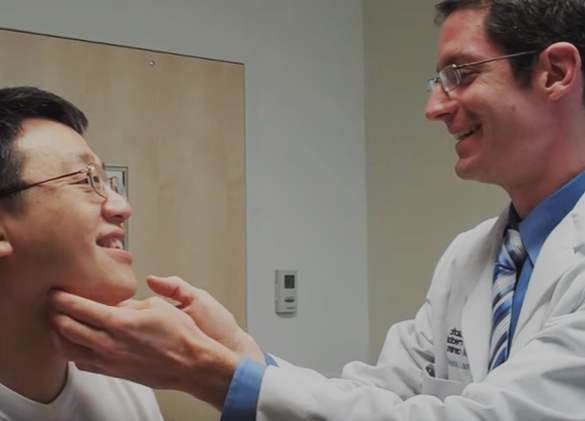A commonly encountered issue in ethnic rhinoplasty (especially in Asian and African American noses) is the low bridge or dorsum. This can lead to the appearance of a wider nose and it also tends to create a more washed-out, less defined appearance to the face.
The Best Augmentation Material
So what is the best way to augment the bridge? The options basically boil down to whether to use a patient's own tissue (cartilage, bone, fascia) versus a synthetic product (silicone, medpore, or gortex). I prefer using a patient's own tissue for augmenting the nasal bridge (septal, ear or rib cartilage) as it is incorporated into the nose in the most natural manner. While there are risks with warping of cartilage grafts (mainly rib cartilage), by using advanced cartilage carving techniques I have not found this to be an issue in my own practice.

This patient is a good example of bridge augmentation. I used her septal cartilage that I then layered to create a thick enough graft. I then carved it to create the correct dorsal contour and placed the graft using a closed rhinoplasty approach using only hidden incisions inside the nose. The photos below are a good representation of how increasing the height of the bridge also improves the frontal view. The nose seems less wide and the eyes appear closer together and better defined.

Alternative Materials
As mentioned earlier, silicone, medpore or gortex are alternative implant materials that can be used. They are more commonly used in patients with thicker skin, especially Asian patients. They come in L-shaped and I-shaped. The L-shaped type is meant to augment the nasal tip, but in a way which I don't feel looks particularly natural. The benefit of using these types of implants is that they avoid the need to harvest a graft material.
However, I have seen many patients with implants that were placed years or decades ago who presented to me with delayed reactions to the implants necessitating implant removal. These patients reported that their noses looked fine for many years before noting the unwanted changes. Another concern with these implants is the increased pressure they can create at the tip of the nose. Thicker skinned patients often do fine with this but some patients can experience devastating complications such as graft extrusion through the skin.
In patients unhappy with their result from prior dorsal augmentation, revision rhinoplasty techniques can be used to remove their existing implant and replace it with their own tissue.
Is Ethnic Rhinoplasty Right for You?
Do you want to learn more about having non-Caucasian Rhinoplasty in Seattle? Read more about Ethnic Rhinoplasty here. You can Contact us or call 206.505.1300 to schedule a consultation with Dr. Lamperti to see what options you have.


